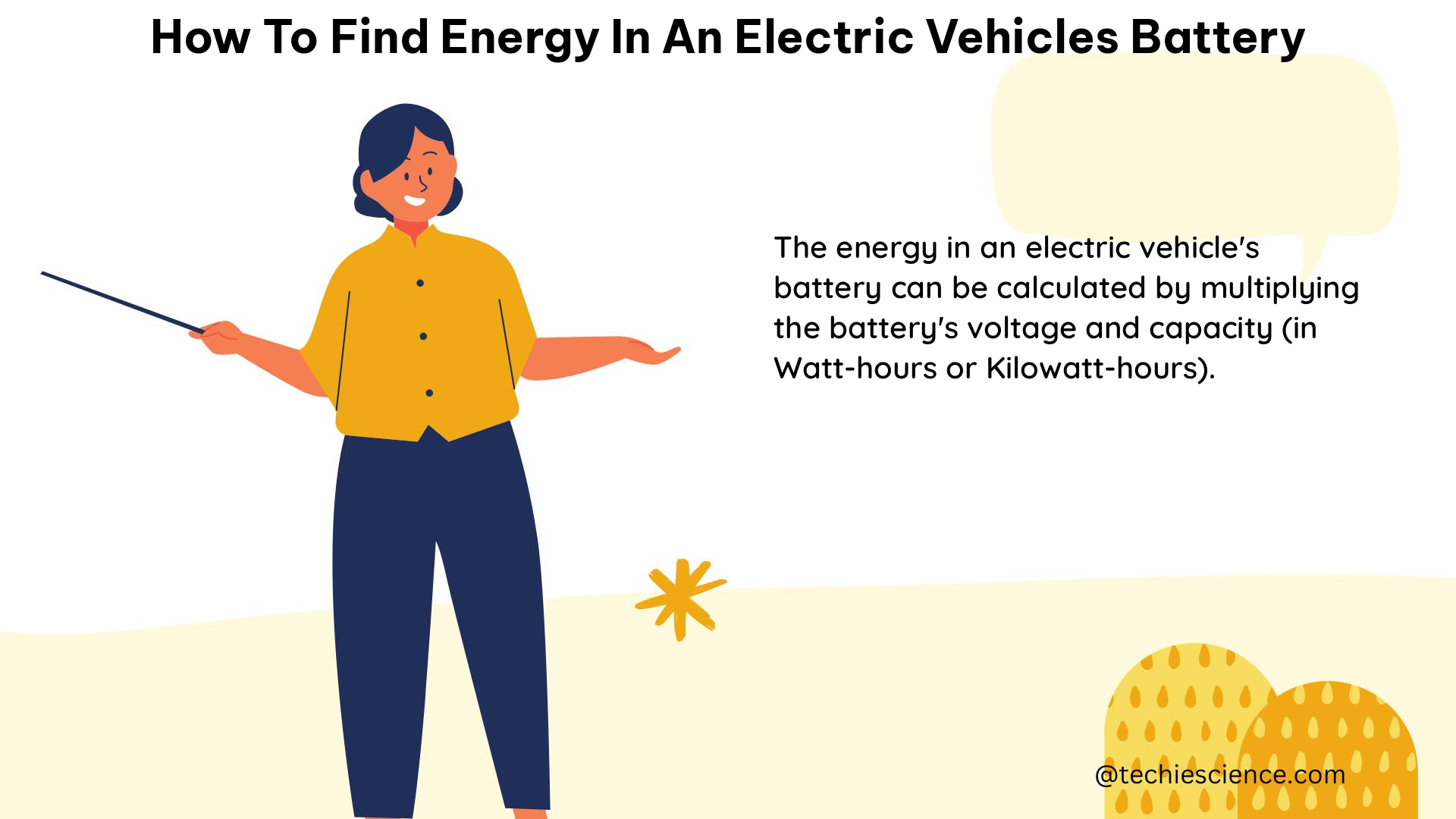Electric vehicles (EVs) have gained significant popularity in recent years due to their environmental benefits and advancements in battery technology. Understanding the energy stored in an EV’s battery is crucial for efficient operation, range estimation, and battery health management. In this comprehensive guide, we will explore various advanced and technical methods to accurately determine the energy in an electric vehicle’s battery.
1. Vibration Signal Analysis
One of the most advanced techniques for estimating the energy in an EV’s battery is through vibration signal analysis. This method utilizes the characteristic vibration signals generated by the battery during operation and applies advanced signal processing and machine learning algorithms to predict the battery’s State of Health (SOH).
Ensemble Empirical Mode Decomposition (EEMD)
The Ensemble Empirical Mode Decomposition (EEMD) is a powerful signal processing technique used to decompose the vibration signals into intrinsic mode functions (IMFs). These IMFs capture the different frequency components of the vibration signal, which can be used to identify patterns and trends related to the battery’s health.
K-means Clustering and Particle Swarm Optimization (PSO)
After the vibration signals are processed using EEMD, the next step is to apply machine learning algorithms for classification and prediction. The K-means clustering algorithm is used to group the vibration signal features into distinct clusters, while the Particle Swarm Optimization (PSO) algorithm is employed to optimize the clustering parameters and improve the accuracy of the battery SOH prediction.
The accuracy of this method has been reported to have a prediction error of only 2.6% when the number of battery cycles reaches 600.
2. Discharge Time and Temperature Analysis

Another advanced technique for estimating the energy in an EV’s battery is by analyzing the discharge time and temperature characteristics of the battery. This method focuses on measuring the discharge time and battery temperature to estimate the remaining useful life of the lithium-ion batteries.
Measurable Features
The key measurable features used in this approach include the discharge time, battery temperature, and their relationship. These features are then used to improve the accuracy of the battery health estimation, providing a more reliable assessment of the energy stored in the battery.
3. Data Collection and Management
Comprehensive data collection and management are essential for accurately determining the energy in an EV’s battery. This involves gathering and organizing various data points related to the electric vehicle, such as:
- Transportation fuel use
- Vehicle stock
- Vehicle kilometers traveled
- Mode of travel
- Access to home charging
- Gasoline prices
- Electricity tariffs
- Drive cycle profiles
- Electric generation mix
- Geospatial data
By collecting and managing this data, researchers and engineers can gain a deeper understanding of the factors that influence the energy consumption and battery performance of electric vehicles.
4. Mathematical Calculation
In addition to the advanced techniques, mathematical equations can also be used to estimate the battery capacity and State of Health (SOH) of an EV’s battery. One such equation is:
Measured capacity (MC) = 100 * TC / (EP-SP)
Where:
– SP: Battery charge percentage when starting charging
– EP: Battery charge percentage when finishing charging
– TC: Amount of kWh used in the charging session
– OB: Original battery capacity stated by the manufacturer
By using this equation, you can calculate the measured capacity of the battery and compare it to the original battery capacity to determine the battery’s SOH.
5. On-Board Diagnostics (OBD2) Dongle
Another method for finding the energy in an EV’s battery is by using an OBD2 (On-Board Diagnostics) dongle. This device can be plugged into the vehicle’s diagnostic port to read and record the total kWh charged and discharged on the vehicle.
The accuracy of this method is particularly high when combined with other techniques, as it provides a direct measurement of the energy flow in and out of the battery.
6. Charging Efficiency and Cooling
When determining the energy in an EV’s battery, it’s essential to consider the charging efficiency and cooling systems of the vehicle. Factors such as charging losses, active heating and cooling of the battery, interior heating and cooling, and power consumption from accessories can all impact the energy available in the battery.
For example, DC Fast Charging typically has a charging efficiency of 90-95%, meaning that 5-10% of the energy is lost during the charging process. Accounting for these energy losses is crucial for accurately estimating the energy stored in the battery.
By combining these advanced and technical methods, you can gain a comprehensive understanding of the energy stored in an electric vehicle’s battery, which is essential for efficient operation, range estimation, and battery health management.
References:
1. New energy electric vehicle battery health state prediction based on vibration signal. (2023). https://www.ncbi.nlm.nih.gov/pmc/articles/PMC10770444/
2. Accurate remaining useful life estimation of lithium-ion batteries in electric vehicles based on a measurable feature-based approach with explainable AI. (2024). https://www.researchgate.net/publication/374028021_Accurate_remaining_useful_life_estimation_of_lithium-ion_batteries_in_electric_vehicles_based_on_a_measurable_feature-based_approach_with_explainable_AI
3. A quantitative study of electric vehicle attributes and consumer attitudes. (2022). http://www.diva-portal.org/smash/get/diva2:1664304/FULLTEXT01.pdf
4. Data Collection and Management — EV Deployment Guidebook. (n.d.). https://greeningthegrid.org/electric-vehicle-toolkit/electric-vehicle-building-blocks-guidebook/data-management
5. Calculate your EV battery State of Heath and real capacity using math and a charger. (2024). https://www.reddit.com/r/electricvehicles/comments/195atxg/calculate_your_ev_battery_state_of_heath_and_real/

The lambdageeks.com Core SME Team is a group of experienced subject matter experts from diverse scientific and technical fields including Physics, Chemistry, Technology,Electronics & Electrical Engineering, Automotive, Mechanical Engineering. Our team collaborates to create high-quality, well-researched articles on a wide range of science and technology topics for the lambdageeks.com website.
All Our Senior SME are having more than 7 Years of experience in the respective fields . They are either Working Industry Professionals or assocaited With different Universities. Refer Our Authors Page to get to know About our Core SMEs.